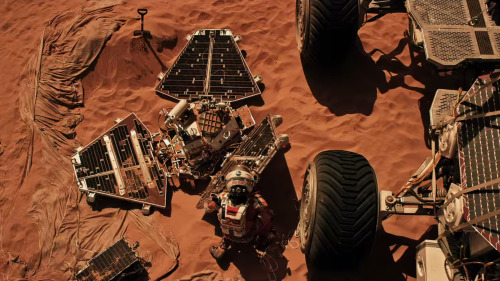Scientists Are Working On A Real-Life Invisibility Cloak

Scientists Are Working on a Real-Life Invisibility Cloak
An actual invisibility cloak? We may be getting close. Scientists at the University of Rochester have created the “Rochester Cloak,” a device that effectively makes the object behind it invisible by making light move around it. http://futurism.com/videos/scientists-working-real-life-invisibility-cloak/
More Posts from Curiositytherover and Others

FAA: No, you won’t need to pay someone to register your drone

Anyone with a younger brother or sister knows it’s not always an easy ride (unless you happen to be very fortunate), but a new study suggests there could be real, tangible health benefits to having a younger sibling. Researchers have linked having a little brother or sister to a lower risk of obesity in a comparison of the body mass indexes (BMIs) of 697 children in the US.
The University of Michigan team found that the birth of a sibling between the ages of two and four was associated with a healthy BMI, while those without a sibling by the first grade (age six) were almost three times more likely to be obese at that age. Those are quite dramatic findings, but the researchers behind them aren’t entirely sure why such a link exists.
“This study is believed to be the first to track subsequent increases in BMI after a child becomes a big brother or sister,” said senior author Julie Lumeng. “Research suggests that having younger siblings - compared with having older or no siblings - is associated with a lower risk of being overweight. However, we have very little information about how the birth of a sibling may shape obesity risk during childhood.”

The size of the Orion spacecraft vs Apollo.

Perseid Fireball at Sunset Crater


Mars Pathfinder & Sojourner Rover (360 View) Explained
Thanks to new technology, we can take a 360-degree tour of the 1997 Pathfinder mission landing site, including Sojourner, the first Mars rover. Check out this interactive YouTube panorama, and then…
…keep scrolling to find out more about each point of interest, how the Pathfinder mission compares to “The Martian” and NASA’s real Journey to Mars.

Yogi
“Yogi” is a meter-size rock about 5 meters northwest of the Mars Pathfinder lander and the second rock visited by the Sojourner Rover’s alpha proton X-ray spectrometer (APXS) instrument. This mosaic shows super resolution techniques applied to help to address questions about the texture of this rock and what it might tell us about how it came to be.

Twin Peaks
The Twin Peaks are modest-size hills to the southwest of the Mars Pathfinder landing site. They were discovered on the first panoramas taken by the IMP camera on the July 4, 1997, and subsequently identified in Viking Orbiter images taken over 20 years ago. They’re about 30-35 meters tall.

Barnacle Bill
“Barnacle Bill” is a small rock immediately west-northwest of the Mars Pathfinder lander and was the first rock visited by the Sojourner Rover’s alpha proton X-ray spectrometer (APXS) instrument. If you have some old-school red-cyan glasses, put them on and see this pic in eye-popping 3-D.

Rock Garden
The Rock Garden is a cluster of large, angular rocks tilted in a downstream direction from ancient floods on Mars. The rocky surface is comprised of materials washed down from the highlands and deposited in this ancient outflow channel.

MOAR INFO
Pathfinder Lander & Sojourner Rover
Mission Facts [PDF]
Science Results
Rock & Soil Types


This vista was stitched together from many images taken in 1997 by Pathfinder.

Pathfinder and Sojourner figure into Mark Watney’s quest for survival on the Red Planet in the book and movie, “The Martian.” See JPL’s role in making “The Martian” a reality: http://go.nasa.gov/1McRrXw and discover nine real NASA technologies depicted in “The Martian”: http://go.nasa.gov/1QiyUiC.

So what about the real-life “Journey to Mars”? NASA is developing the capabilities needed to send humans to Mars in the 2030s. Discover more at http://nasa.gov/journeytomars and don’t forget to visit me when you make it to the Red Planet. Until then, stay curious and I’ll see you online.

Roller Coaster Physics.
The principle that underlies the working of a roller coaster is simple. As you ascent to the top, your potential energy builds up. ( i.e the higher you go, longer the distance that the force of gravity can act upon)
This built up Potential energy gets released as kinetic energy downhill. ( Kinetic energy is the energy of motion- linear and rotational).
Now what Roller Coaster Engineers do is abuse this principle to engineering perfection.

We normally post our tech news roundups on Fridays, but due to turkey, football, and lots of napping, we’re publishing it today instead. Enjoy!
1. The right drones for everyone this holiday season Love is in the air, and here’s a list of UAVs you can use to catch it. There’s never been a better reason to sit around while your relatives drone on and on. Really. With gifts like these the holidays will fly right by. via: Quartz
2. New tech can wirelessly charge your electronics with a standard Wi-Fi router There’s a good reason your Wi-Fi router is always shooting dirty looks at your laptop’s power cord. But rather than stoop to their level, routers everywhere are taking up the slack. Try to be sympathetic when your power cord finally winds up jobless. It’s bound to come as a shock. via: BGR 3. The Pickle Index is a Delightfully Weird, App-Driven Novel Like No Other Immersive multimedia experiences are becoming more and more advanced every day, but there are plenty of people who still use monomedia to get their virtual realities. With The Pickle Index, techies and bookworms will finally have something to talk about if they’re both forced to interact with other humans. via: WIRED
4. Circuit Board Tattoos That Actually Work Will Make Your Cyborg Fantasies Come True Do yourself a favor and only get tattoos in languages that you understand. Otherwise you might end up with a bunch of spurious output, and it’s going to take forever to find that missing comma. via: Gizmodo


NASA’s FireSat system will be able to detect wildfires from space




Just because you can’t see it doesn’t mean mental illness don’t exist.
www.thebpmag.com
-
 kohlgarrison-blog liked this · 9 years ago
kohlgarrison-blog liked this · 9 years ago -
 vrows56 liked this · 9 years ago
vrows56 liked this · 9 years ago -
 rusyeterence-blog liked this · 9 years ago
rusyeterence-blog liked this · 9 years ago -
 thesnappleofmyeye liked this · 9 years ago
thesnappleofmyeye liked this · 9 years ago -
 compressedconstellations liked this · 9 years ago
compressedconstellations liked this · 9 years ago -
 venneto reblogged this · 9 years ago
venneto reblogged this · 9 years ago -
 venneto liked this · 9 years ago
venneto liked this · 9 years ago -
 voidforests liked this · 9 years ago
voidforests liked this · 9 years ago -
 nme09 liked this · 9 years ago
nme09 liked this · 9 years ago -
 c-otoole liked this · 9 years ago
c-otoole liked this · 9 years ago -
 savgogh liked this · 9 years ago
savgogh liked this · 9 years ago -
 shbyeela reblogged this · 9 years ago
shbyeela reblogged this · 9 years ago -
 shbyeela liked this · 9 years ago
shbyeela liked this · 9 years ago -
 ithinkimawingit liked this · 9 years ago
ithinkimawingit liked this · 9 years ago -
 akemi713 liked this · 9 years ago
akemi713 liked this · 9 years ago -
 epikmicky reblogged this · 9 years ago
epikmicky reblogged this · 9 years ago -
 feastforqueenbitches reblogged this · 9 years ago
feastforqueenbitches reblogged this · 9 years ago -
 feastforqueenbitches liked this · 9 years ago
feastforqueenbitches liked this · 9 years ago -
 iwillhaveitalljustwait liked this · 9 years ago
iwillhaveitalljustwait liked this · 9 years ago -
 ourbw reblogged this · 9 years ago
ourbw reblogged this · 9 years ago -
 naderqot liked this · 9 years ago
naderqot liked this · 9 years ago -
 drackomancy liked this · 9 years ago
drackomancy liked this · 9 years ago -
 marinahanna reblogged this · 9 years ago
marinahanna reblogged this · 9 years ago -
 gordonspooner liked this · 9 years ago
gordonspooner liked this · 9 years ago -
 raw-r-evolution reblogged this · 9 years ago
raw-r-evolution reblogged this · 9 years ago -
 curiositytherover reblogged this · 9 years ago
curiositytherover reblogged this · 9 years ago -
 luckyanomaly liked this · 9 years ago
luckyanomaly liked this · 9 years ago -
 egotisticalegg reblogged this · 9 years ago
egotisticalegg reblogged this · 9 years ago -
 egotisticalegg liked this · 9 years ago
egotisticalegg liked this · 9 years ago -
 skater314159 reblogged this · 9 years ago
skater314159 reblogged this · 9 years ago -
 scientiaetsapientia liked this · 9 years ago
scientiaetsapientia liked this · 9 years ago -
 typewritersnail reblogged this · 9 years ago
typewritersnail reblogged this · 9 years ago